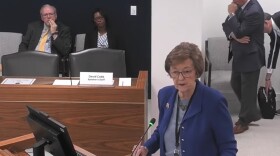State education officials are working on plans to redesign the state's system for grading schools.
We're not talking about students' report cards, but rather the "A" through "F" letter grades that their schools receive on an annual basis. You find see your local school's report card here.
State Superintendent Catherine Truitt gave a report Tuesday to the House K-12 education committee on efforts to change how those grades are determined.
Truitt said redesigning the state’s accountability model for testing students and grading schools has been a priority of her administration, and is a key part of her strategic plan. A school's grade is currently based on a complex formula that is about 80% based on how students score on their end-of-grade tests and 20% on their improvement on the tests.
“There is a general pervasive feeling for pretty much everyone who works in public education that our current accountability and testing model, AKA the 80/20 model, is not sufficient for defining school quality and student success,” Truitt told lawmakers.
All states implement testing and accountability systems that meet federal guidelines. North Carolina’s current accountability model has been in place since 2015.
Deputy State Superintendent Michael Maher described how North Carolina’s model produces letter grades that are inconsistent with other states.

Maher showed a comparison of North Carolina’s distribution of letter grades compared to other Southern states, as well as a comparison of their performance on National Assessment of Education Progress tests. The NAEP tests are branded as the “nation’s report card” because it is one of few standardized tests administered broadly in the United States with a nationally representative sample.
“The preponderance of data here will show you that North Carolina schools are either on par or better than these comparison states using the same benchmark data. Yet, we are assigning D's and F's [to schools] at far greater rates than either of these states.”
Nearly half of elementary and more than half of middle schools in the state are rated as an "F" under the current model.
“That kind of begs some questions for us,” Maher said. “The NAEP data affirms North Carolina schools are performing considerably better than their state performance grades otherwise suggest.”

The Department of Public Instruction convened an advisory group of educators and policymakers to rethink how school letter grades can be determined to better reflect a school’s overall quality.
“We need to include more than just student testing that takes place one day of the year, which largely is what determines what a school's letter grade is,” Truitt said.
Based on those meetings, state education officials are proposing a new model that takes into account factors such as:
- five year graduation rates
- improvements on tests by student subgroups — for example by race, disability or socioeconomic status
- student outcomes after high school graduation, with the goal of students being employed, enlisted in the military or enrolled in higher education
- measures of post-secondary preparation, for example, completing advanced placement classes or achieving an industry-recognized certification
- extra-curricular activities
- measures of “durable skills,” such as collaboration, communication and critical thinking
- attendance rates and reduction of chronic absenteeism
- measures of school climate
State officials and superintendents are still working to define how those factors would be measured. Truitt says the Department of Public Instruction plans to bring more detailed recommendations to the General Assembly next February in time for legislation to be crafted during the short session.







